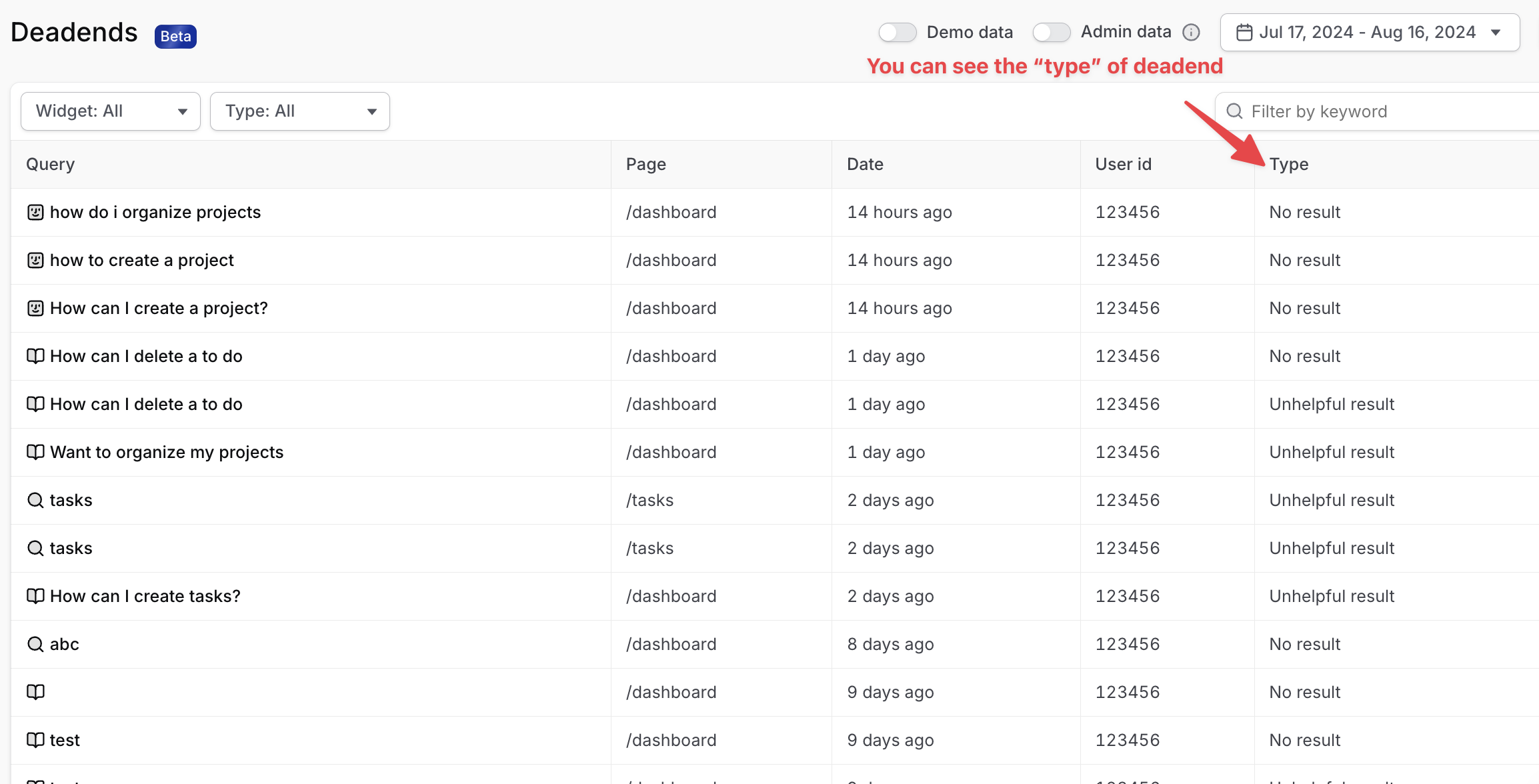The software market is crowded. There are businesses in the tiniest of niches—and yet new successful startups emerge every day. Whether you're launching a new company or building a new product at an existing one, you need to find an opportunity to grow.
How do you identify a great market opportunity when it seems like everything has already been done?
One of these is white space analysis. This technique looks at where there’s an absence of competitors or unmet customer needs, allowing businesses to tap into potential revenue growth opportunities as well as better serve their customers. Although it’s not exactly a novel concept, its use within this industry has become more widespread lately because it reveals essential information regarding consumer preferences and market conditions.
White Space Analysis offers solutions that can drive development and improvements. Those who want top-tier performance should certainly invest some time learning about how they can maximize this approach in order to reach successful outcomes like increased profit margins or strengthened relationships with clients. This blog post will act as your comprehensive guide if you’re looking for guidance on mastering White Space Analysis specifically tailored towards SaaS companies.
Key Takeaways
- White Space Analysis in SaaS enables informed decision-making and strategic planning to uncover potential opportunities for business growth, resource optimization, and improved customer satisfaction.
- Utilizing CRM tools & analytics platforms provides insights to identify market gaps & leverage white space opportunities.
- Case studies illustrate how other SaaS businesses can expand product offerings & improve customer satisfaction by leveraging White Space Analysis.
White Space Analysis in the SaaS Industry

Deeply understanding existing customers and their current investments is the initial step in discovering these ‘white spaces’, which can ultimately lead to Business growth. Through white space analysis by account planning and closely assessing key details from successful accounts, companies have an opportunity for generating more revenue through cross-selling or upselling of services. This helps build stronger customer relationships with both present market rivals as well as untapped markets not yet seen before. Giving SaaS businesses a unique chance to stand out amongst competitors while also increasing customer satisfaction rates.
Identifying Gaps in the Market
White space analysis is an important step for SaaS companies to identify potential market opportunities. To achieve this, they need data such as customer accounts and interaction details with the company in order to recognize areas that may be improved upon. Gathering relevant information can come from collecting customer feedback which helps uncover their unmet needs. User interviews are a great way of gaining valuable insights too. Incentives like discounts or gifts give customers greater motivation to participate fully in these surveys and help firms produce superior products suitable for better positioning on the market.
Analyzing Customer Data for Insights
White space analysis is a powerful tool for obtaining valuable insights into customer behavior, needs and pain points. By analyzing customer data such as demographics, purchase history and web usage patterns, companies can identify white space opportunities that they may have overlooked, which could lead to new products or services based on unmet market demands. Companies should also leverage sales data, market research and strategic initiatives in their efforts to analyze potential gaps between supply of existing offerings from competitors versus consumer demand in order to develop competitive advantages within the marketplace.
One easy way to collect lots of user feedback is to run surveys that gather feedback in your product. We make it easy to build these with no engineering help in Command AI.
Building an NPS survey quickly
You can target based off of different segments and cohorts and also trigger after specific events are completed.

This way, you can make sure that you're getting clear insight into users' wants and needs.
White Space Mapping for SaaS Companies

When white spaces have been identified through analysis, a company can take advantage of them by using the process known as white space mapping. This is where companies create a visual representation to illustrate untapped areas in their market and target new customers based on those opportunities. The resulting ‘white space map’ enables businesses to discern how they are positioned within the marketplace and plan strategically accordingly for best results.
White space mapping consists of two types – internal which involves assessing existing products/services internally. While external focuses more externally with competitor data analysed too, an important exercise for SaaS firms if they wish to gain full understanding about potential prospects in that area.
Internal Mapping: Assessing Product Offerings
In the context of white space analysis, internal mapping is a beneficial approach for examining an organization’s strengths, weaknesses and competitive threats. Through this method of assessing its processes, businesses can identify their present standing while also recognizing potential areas in which to foster growth or improvement. When using internal mapping as part of SaaS companies’ white space analysis strategy, it is important to consider customer touchpoints, stages associated with client interaction, and consumer profiles. And current state reviews about product offerings – all serving towards discovering neglected needs from customers that may result in increased revenue by designing new features or goods accordingly.
Techniques useful for achieving these objectives within a SaaS setting are: journey mapping through clients’ experiences (including B2B), data travels plotting as well as information outlining products available during each stage plus business management procedure related specifics among others contributing majorly to comprehending spaces previously untapped leading potentially to profitable endeavors upon proper assessment when dealing with white space studies.
External Mapping: Competitor and Market Analysis
Carrying out external white space mapping involves analyzing the market and comparing a company’s product to it in order to discover potential opportunities at an international level. This incorporates anything from new goods or services, up-and-coming developments as well as diminishing tendencies - all of which can be revealed by investigating business units, competitors’ offerings and related stakeholders for any white space openings that suit certain accounts.
For instance, let us take a SaaS provider looking into how there is currently no personalized software available for automating LinkedIn In Mails outreach procedures: this constitutes one example of exploring possible gaps within the industry through external analysis. Accruing data on rivals’ strategies plus insights obtained via customer polls alongside social listening methods are indispensable parts when carrying out such studies concerning outside areas unoccupied before then. Thus giving rise to opportunity formation therein otherwise not noticed beforehand.
Benefits of White Space Analysis for SaaS Businesses

White space analysis offers a multitude of advantages to SaaS businesses, including the potential for generating additional revenue. By identifying gaps in existing products and services or discovering undiscovered market opportunities, strategic plans can be formulated which capitalizes on unexplored markets, leading to increased income. The process also helps with customer retention by understanding unmet needs and targeting those areas through upselling, cross-selling as well as expanding current offerings where possible so that customers experience more satisfaction with them staying loyal over time. Lastly, hidden sales prospects are unearthed allowing organizations gain access to new avenues they weren’t aware of priorly Assisting their development goals resulting from white space assessment findings overall!
Revenue Growth and Expansion
White space analysis is an essential tool to promote revenue growth and a company’s development. By looking at untouched markets, it helps companies discover new features that their customers may want—opening up the opportunity for increased income through the attraction of fresh clients. White space strategies allow firms to identify key accounts with potential for improved sales so as to extend their reach even more efficiently. Thus resulting in business expansion all around. All-in-all, this crucial technique serves its purpose well by aiding businesses in generating substantial returns from profitable opportunities identified using white space analysis methods.
Enhanced Customer Retention
White space analysis has become an invaluable tool for SaaS companies when it comes to customer retention. By using this approach, businesses can identify unmet needs and market gaps in order to create tailored offerings that deliver extra value. Thus fostering customer satisfaction and consequently increasing loyalty. A strong relationship between customer satisfaction & retaining customers is fundamental for successful subscription-based services - users who are content with the product tend to use it longer, upgrade their plans more often as well as engage with a brand.
White space analysis provides not only opportunities for enhanced service but also strengthens connections with key accounts which results in higher levels of client devotion leading eventually into better retention rates & greater business income margins.
Informed Decision-Making and Strategic Planning
White space analysis is essential in the process of formulating strategies for SaaS companies. By exploring overlooked potentials and understanding customer needs, this type of analysis helps organizations make educated decisions about product growth and expanding their reach into new markets. For instance, using white space examination could lead to a company recognizing that certain customers are specifically asking for a feature – thereby facilitating strategic planning with an aim towards satisfying these users’ demands.
Through carefully studying gaps within existing services or market areas via white space evaluation businesses can intelligently distribute resources - targeting key accounts where the highest returns on investment appear most likely. Putting greater emphasis on those locations offers more significant chances at revenue increase than others do. All in all, such tactics provide invaluable insights while utilizing knowledge concerning neglected possibilities can result in tangible gains too from comprehensive analyzing business opportunities present by spaces previously unexplored.
Implementing White Space Analysis in Your SaaS Business

To leverage the potential of white space analysis, you can begin by collecting customer data to uncover what they need and want. From there, it is necessary to conduct market research in order to identify any open spaces where your product or service could be successful. Next comes utilizing Microsoft Power BI Services and CRM tools with analytics platforms that allow visualizing and prioritizing these newly discovered opportunities. Afterward, a sales strategy should be devised based on them so as to increase revenue growth through taking advantage of openings within the marketplace. Finally, action must then actually follow up those plans for success to become realizable!
Gathering and Analyzing Customer Data
In order to implement white space analysis, the first step would be data extraction and analysis of it. Businesses can use a variety of methods for acquiring this information such as surveys, product analytics feedbacks, sales records integration or combining different sources into one database. Metrics such as Monthly Recurring Revenue (MRR), Annual Growth Rate, Churn rate, Customer Lifetime Value (CLV) Activation Velocity Expansion revenue etc are evaluated when studying these insights in an attempt to better understand consumer behaviour needs and preferences related to specific products which enables businesses to design smarter strategies while making key decisions about their production lines. Knowing customer satisfaction level through score like CSAT or Net Promoter Score will be essential for improving relationships between companies brands and consumers too.
One of the best ways to get better customer insight is through intent data. One example of this is through chat queries in a user assistant like our Copilot product. Here, users can ask questions and get fast AI answers trained off your help documentation.
Not only does this the flex support tickets and produce a better customer experience, as well as reduce strain on your support team, it also allows you to see clearly and natural language how your users are thinking and talking about your product.

For example, you can see that ends, where users run into a wall and can't get an answer and have to talk to an agent. This helps you identify not only gaps in your health documentation, but areas of difficulty within your product.
You can turn this feedback into actionable product improvement!
Utilizing CRM Tools and Analytics Platforms
White space analysis is an essential part of sales team strategy, and CRM tools and analytics platforms play a critical role in facilitating this. Popular solutions like Salesforce, Zoho CRM, Pipedrive or HubSpot can offer performance metrics related to the sales process as well as insights into customer behaviour that help identify areas for potential growth.
Analytics platforms provide valuable data-driven insights that allow companies to pinpoint untapped market opportunities, spot gaps in current services provided by the company and recognize unfulfilled customer needs – all vital components of white space analysis aimed at uncovering avenues for business expansion. The visual elements offered (like graphs, charts, etc.) make it easy to access pertinent information needed when assessing such possibilities.
Acting on Identified Opportunities
Analyzing white spaces is a crucial step in boosting revenue growth. To take advantage of uncovered opportunities, SaaS companies should assess current offerings and markets to identify customer needs that are currently unmet. Through White Space Analysis tools such as Arpedio, businesses can gain visibility into market gaps by visually mapping out the findings and ranking them based on priorities set with organizational objectives in mind. This allows for strategic resource allocation towards meeting underserved demands from customers, which ultimately leads to profitable outcomes for any enterprise harnessing these insights effectively through actionable measures taken up at their disposal.
Case Studies: SaaS Companies Leveraging White Space Analysis

For a better understanding of the use of white space analysis in practice, let’s look at two case studies. Businesses such as HubSpot, Google and Asana have successfully employed this approach for their own benefit.
Even if these are fictional scenarios, they still offer valuable lessons which can be useful for other software providers who consider applying white space approaches too - from insights drawn from each situation providing substantial knowledge about how such tools should be used correctly based upon real-life examples.
Conclusion
White space analysis is a powerful tool that can drive SaaS businesses to success. Its implementation unlocks untapped market opportunities, helps increase revenue growth and improve customer satisfaction. As a result of tapping into this white space, companies are able to stay ahead of the competition by innovating in order to strengthen their customer relationships over time.
To maximize effectiveness when leveraging these benefits from white-space analysis, it’s important for SaaS firms to continuously work on understanding customers needs as well as keep up with current trends in order to make informed decisions about future strategies. All which will lead them closer to achieving unprecedented levels of growth if applied correctly.
Frequently Asked Questions
What is white space in SaaS?
By conducting White Space Analysis in the SaaS industry, existing market data can be leveraged to identify products or services that are performing well and those needing improvement as well as potential avenues of growth. Data from sales is used for this purpose so overlooked markets may be discovered.
How to do a whitespace analysis?
Create a mapping of the key accounts and stakeholders in order to conduct an analysis with whitespace technique. Utilize this exercise as an opportunity for upselling through the insights obtained from it while keeping professional language without including any irrelevant dates.
How do you determine white space?
To discover untapped prospects, one must first get an idea of their current status, analyze the client accounts available and put together a comprehensive representation of this assessment. Then they can identify untouched white space opportunities in order to benefit from them.
What is the white space account strategy?
White space strategies are aimed at utilizing sales data to discover potential prospects for cross-selling and up-selling, granting businesses the means of growing their income.
What are the benefits of white space analysis for SaaS businesses?
The utilization of White Space Analysis for SaaS businesses has multiple benefits, such as increased revenue and better customer retention rates, which all lead to more informed strategic decisions. This analysis helps create a fuller picture by looking at the untapped potential within the industry.

















